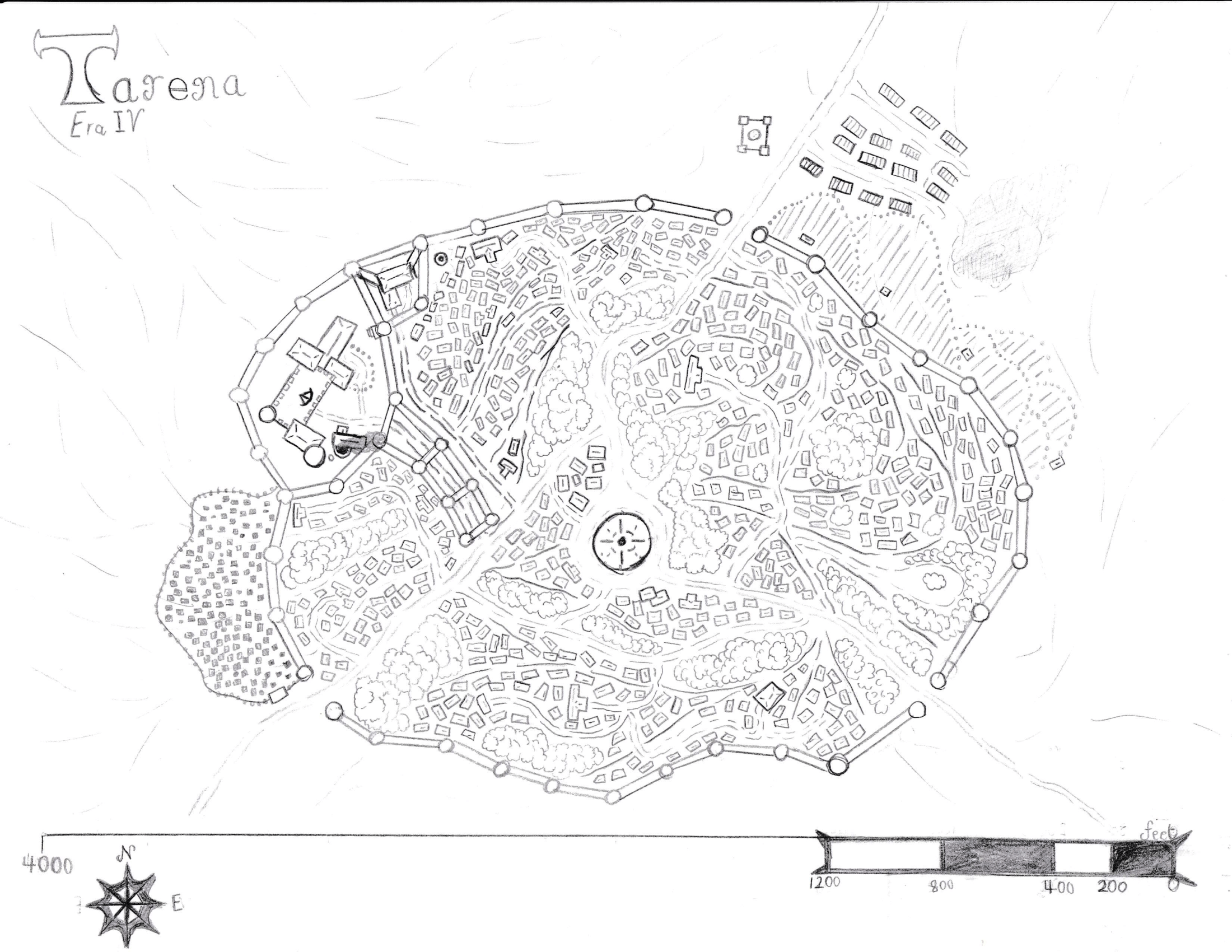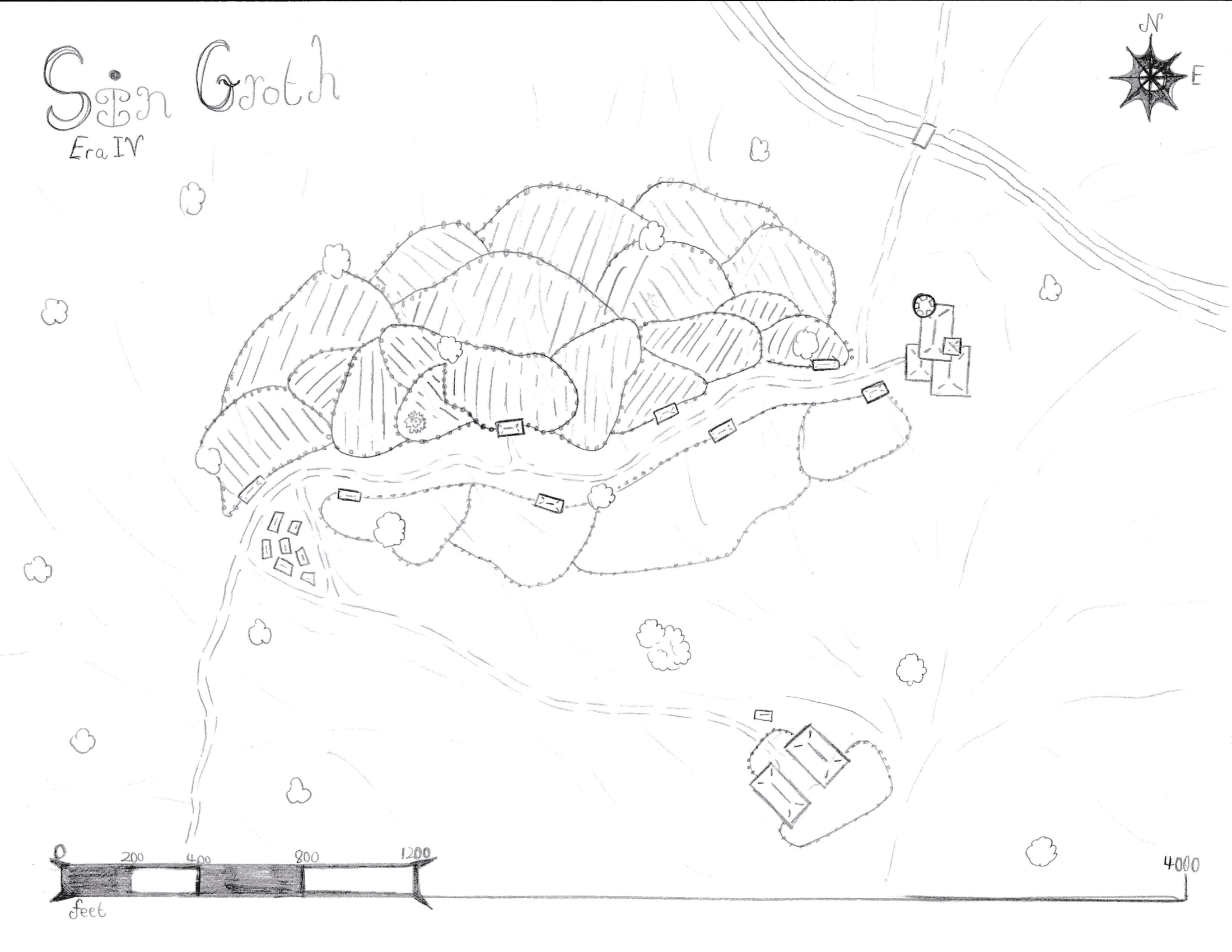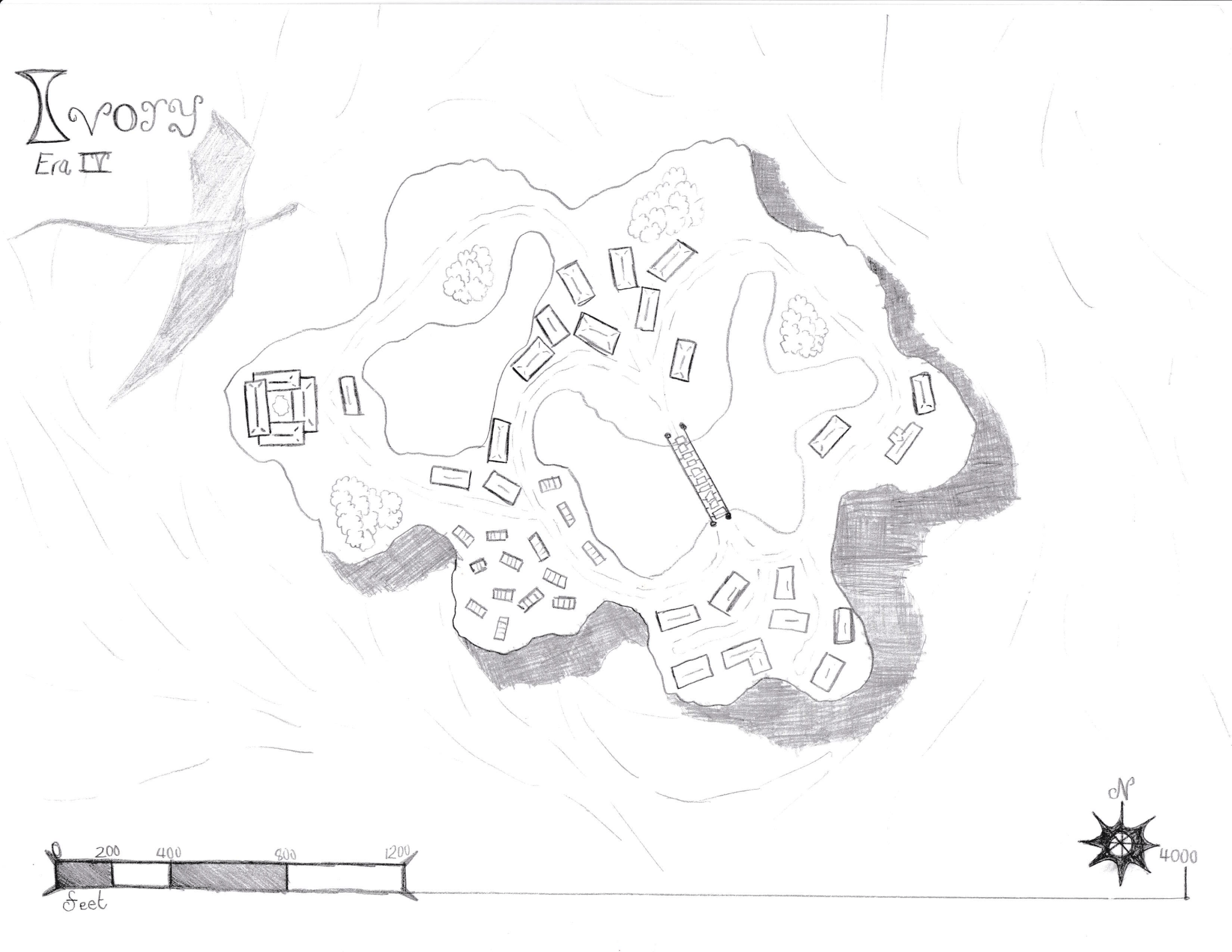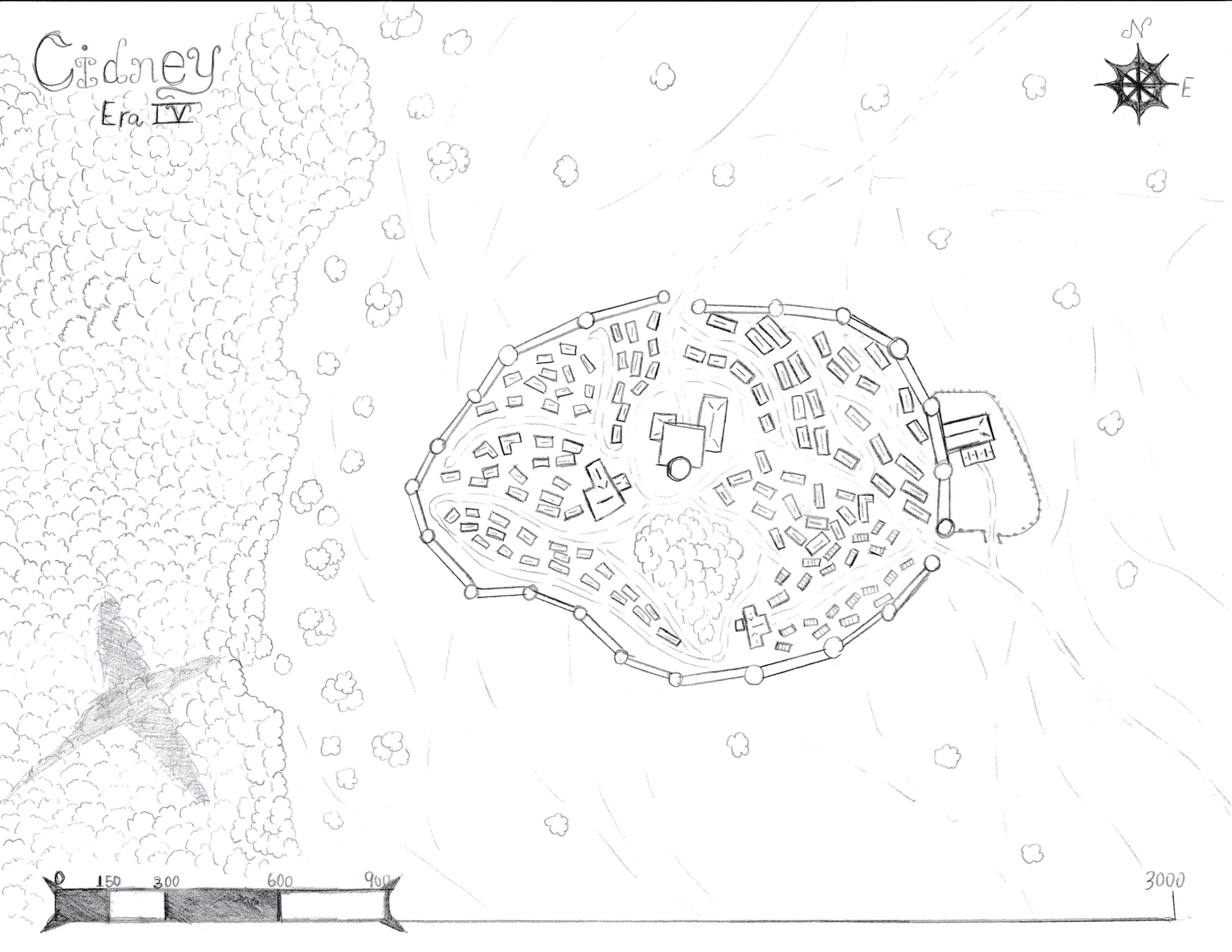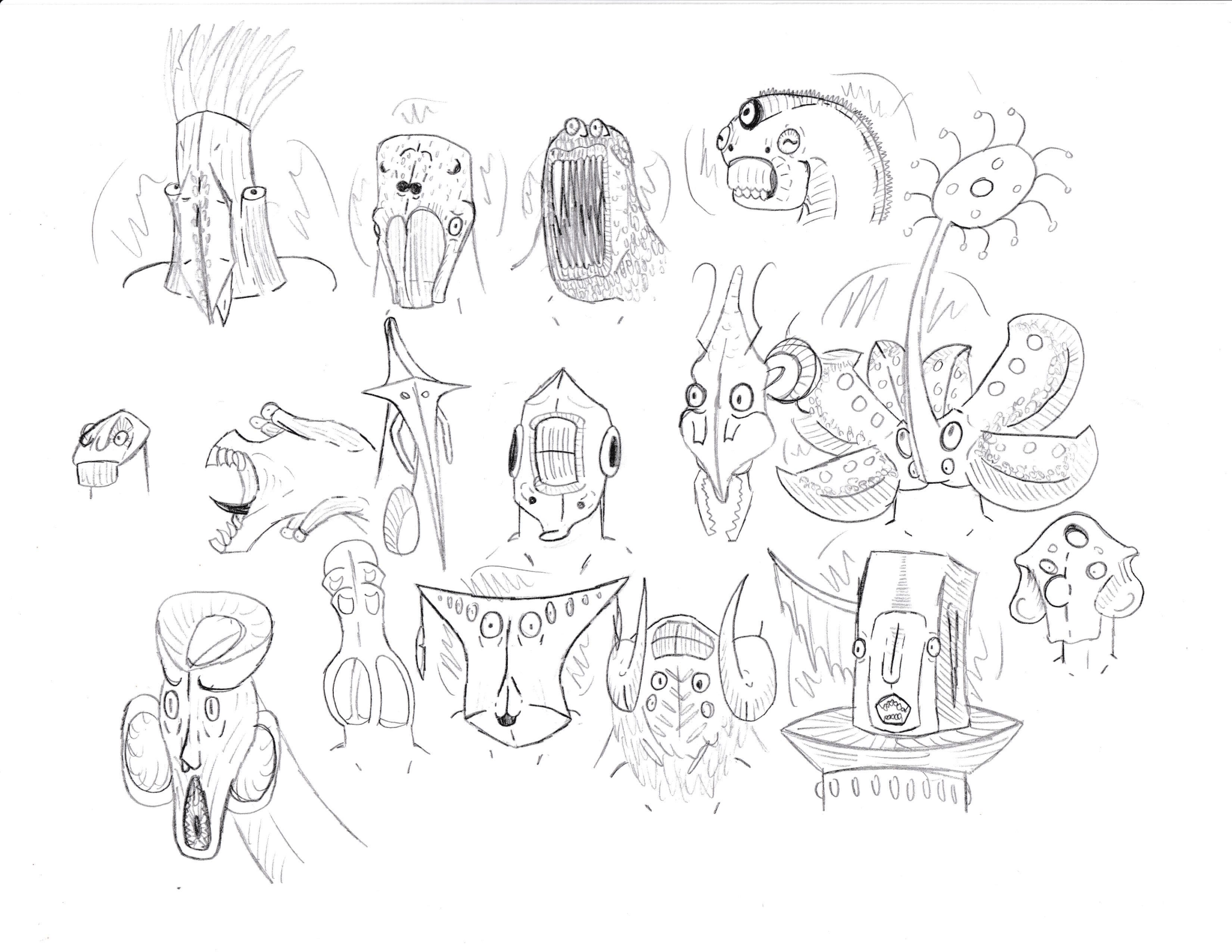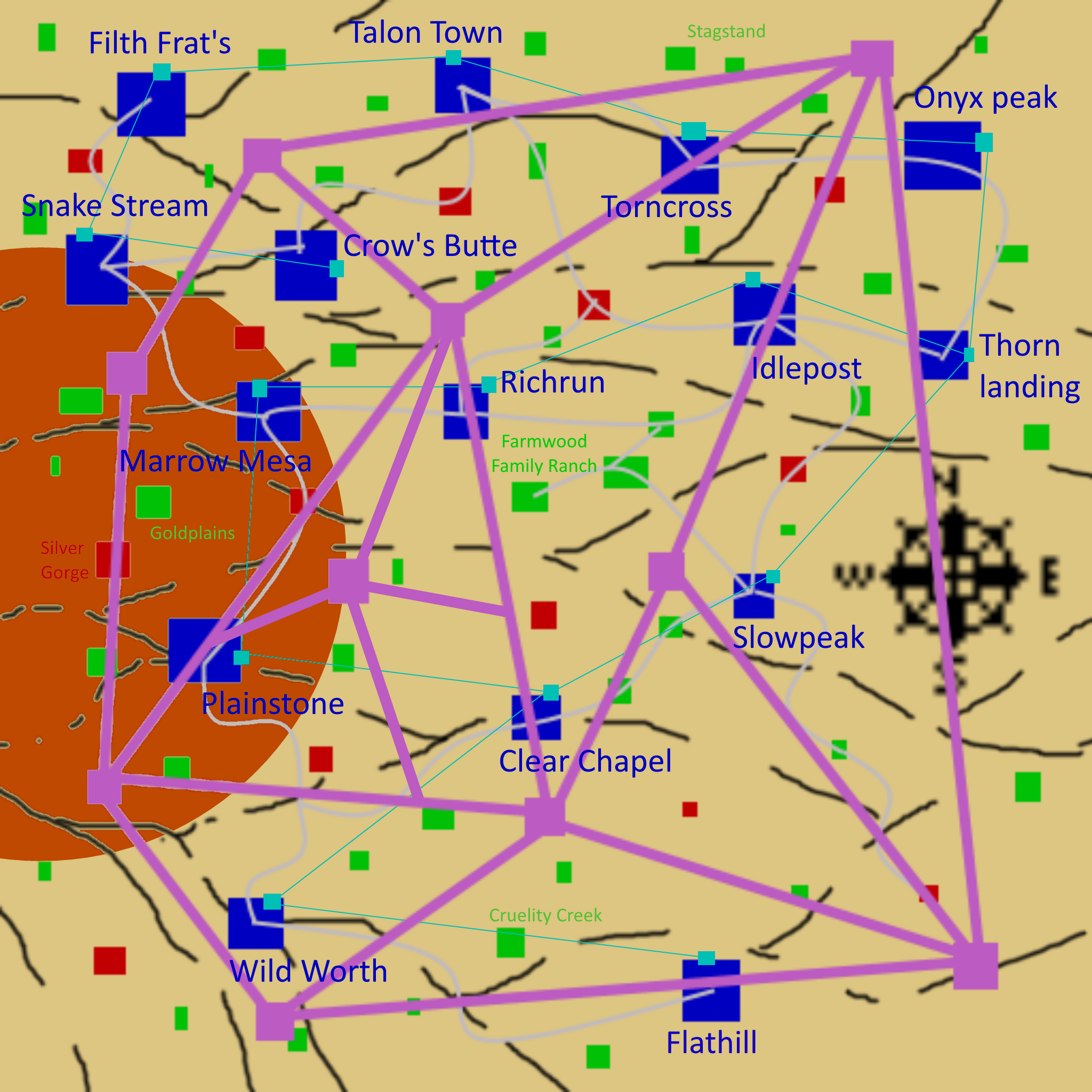I’ve been worldbuilding since I started drawing and writing, but what’s worldbuilding? Worldbuilding is the process of creating a believable and immersive setting, often for books or games—although, I worldbuild for fun mostly. At the moment I have two primary projects: Mysenvar and The Argonaut Experiment. I also find myself seldom working on a third project, Hithered. For more information on any of the projects, you can visit their respective articles.
- Mysenvar is a low-magic fantasy setting, which readers may explore through the Encyclopedia Mysenvaria. It’s a setting with a major focus on immersion, created with the intent that anyone can use it.
- The Argonaut Experiment is a high-magic science-fiction setting with planned multi-media projects. TAE takes place in a galaxy devoid of humanity, where the prominent sophonts have a wide range of body plans and psychologies, with the intent to explore the intricacies of how vastly different alien civilizations can work together to triumph through adversity.
- And Hithered is a silly fantasy/sci-fi mishmash set in a world of insects, where a cult of millipedes threatens the sanctity of the Dome with artifacts recovered from beyond The Fracture. The project has no planned end goal at the moment, but I think it’d be fun to look into publishing a campaign book for the setting.
Each of these settings are drastically different in tone, style, and planned execution. But, each of them share the same roots—and were even once all the same project! I want to use this article to share the history of these projects, and to reflect on how far I’ve personally come in regards to my worldbuilding endeavors.
The Beginning
The story of my first worldbuilding venture begins in early elementary school, when I drew my first comic. I don’t remember the exact details of this comic, but it was drawn and written on a few sheets of ruled paper, and the plot had something to do with aliens invading a planet of ‘stick people’. I suppose, to compensate for my lack of artistic ability, I integrated the stick figures into the lore of the world itself.
I would show this comic to a friend on the bus, a friend whose name I wish I still remembered today. He was a grade higher than me, but we shared a number of common interests, including comics, writing, art, and (most importantly) dragons. In retrospect, I was probably that annoying bus kid at times, but I’d like to think we both share fond memories.
This friend and I would go on to create a series of comics set on this world of stick people: Stick World. As most children, and ego-maniacs (looking at you, Butch Hartman), would probably do we introduced self-inserts of ourselves into the comics, and even extended the offer to other friends (who were thrilled to be included). The Stick World comics had a wide range of plots, including such thrilling adventures as: The stick figures arriving on earth to rescue an ancient artifact. A mysterious burrowing monster wreaking havoc on Stick World. And a corrupting ink which turned people evil.
Stick World holds a special place in my heart, but it also fell into obscurity as I matured. Despite that, the groundwork which the small series of comics laid for my later creative works is undeniable. Stick World and the support I received from friends and family as I wrote them, is what got me so interested in working on creative projects as a kid.
As I continued through elementary school and my art got better, I would start to make more mature comics. I would draw a series of Marvel parody comics, including such titular characters as: The Spider Duck, The Iron Man, and The Iron Woman. As far as I’m aware the only place these comics remain is trapped in my noggin, completely lost to time. Which is extremely unfortunate considering how important this era of comics is to my worldbuilding.
The Ziptonians were a race of triangle-headed green humanoid aliens, who had access to technology far exceeding humanity’s. Among their list of technologies were crystals, which they often imbedded into their skin, that allowed them to summon objects, often weapons, at will. Ziptonians were based off of the Gems from the recently released Cartoon Network television series Steven Universe, the resemblance is undeniable.
Ziptonians were the stereotypical antagonist alien empire: an empire with a vast mothership, an expansive fleet of fighter ships, and invading planets to claim resources. But they served as the punching bags for the actual heroes of the story—the spotlight was never directly placed on them. They were a long way from becoming the Zemynans of The Argonaut Experiment.
The Age of Magic
Sometime during my summer break between elementary and middle school I abandoned the old comics I had been working on and began laying the groundwork for a new series of comics. I’m unsure how the transition came to be, but it would give rise to the Age of Magic comic series, laying the groundwork for all of my future projects.
I still have the Age of Magic comics in protective covers1, though major portions of the first book and a vast majority of other content from the setting are missing. At some point I had undertaken the task to rewrite the original comic, and in the process of doing so misplaced about half of the original book. I also at some point had an entire bestiary detailing monsters from the setting—though, admittedly, child me had stolen many of the monsters from popular settings like Dungeons & Dragons.
Age of Magic was a massive undertaking: together, the 3 primary books I drew and wrote equate to roughly 180 pages of material. Not to mention the numerous extra spin-off comics I made (most of which are lost), a vast number of city and ‘country’ maps2, and even character sheets3. Age of Magic was my first real worldbuilding project, all things considered. It was also, possibly, my most accomplished worldbuilding project—considering nothing else has had quite so many realized projects.
The setting was primarily a fantasy one, though it had elements of science-fiction. It took place on an unnamed planet where magic and fantasy creatures were real things. This planet had one major supercontinent which was divided into 4 separate ‘provinces’ (though, the exact geopolitics of it all were never explored). There were human Gods and existential threats like Cthulhu and (shamelessly stolen from Terraria) the Devourer of the Universe. There were typical fantasy races like the Dwarves, Elves, and Dragonborn, but also the more unique Titans (Inspired by Endermen, but especially the Farlanders Mods, from Minecraft).
I continued to work on Age of Magic even as I moved from public schooling to virtual schooling. It was a project which carried a lot of weight in my life, and it still does to this day. It introduced me to my love for worldbuilding. I remember how much fun I used to have thinking about cool new locations I could add the map, how the cities and kingdoms interacted with one another, and designing the different races and thinking about how their differences impact their societies.
God’s were assigned, primarily, two to a planet, and would often procreate to make Demi-Gods like Rage, the main character of the comics. At some point in the project’s history I began asking too many questions, and the project quickly began spiraling in the direction of science fiction. But the biggest question by far that I asked was: why are Age of Magic’s animals just fantasy animals from Earth? It’s because early in Earth’s evolutionary history, a portal linking Age of Magic’s planet and Earth opened. And that answer changed everything.
Mysenvarn, the Spec-evo World
By late 2019 Age of Magic’s planet had changed drastically, from a high-fantasy to a science-fiction speculative evolution setting by the name of Mysenvarn. Not much of the original Age of Magic remained, though the original four provinces of Age of Magic became the four continents of Mysenvarn4.
The transition from magic fantasy to science fantasy was inspired by the new wave of speculative evolution media I had begun consuming: Expedition by Wayne Barlowe, After Man by Dougal Dixon, and All Tomorrows by C.M. Kosemen.
The premise of Mysenvarn was that a series of portals were discovered by humanity which linked Mysenvarn to Earth. It was believed that life on earth had been seeded by Mysenvarn, and many of the monsters from Earth’s myths and legends were indeed just animals from Mysenvarn. Mysenvarnian animals were characterized by a prominent lung-adjacent organ called the Caeli Sac, which for the world’s mammal-adjacent life was exposed to the elements.
I wish I still had the phylogenetic trees which I had created for the project; unfortunately, most of the project is lost outside of a handful of Instagram posts5. Despite being one of the most short-lived worldbuilding projects I have ever undertaken it had an undeniable impact on the future of my other projects. It was the start of my growing interest in speculative biology and evolution, and it saw my purposeful lean away from human-centrism in my projects6.
At this time I was beginning to brainstorm a new project, one where the Ziptonians lead the story as a massive intergalactic empire. I don’t remember what role humans played in this story, but they were introduced to the vast residents of their galaxy around the early years of the American railroad. The setting saw the rapid advancement of human technology, sped up by their interactions with more powerful alien species.
Hithered
By late 2019 I had begun developing the history for this alternative Earth, it was my first—and last—alternate history project. On this version of Earth, before the aliens had arrived, Canada was annexed by the United States in the early 1800s. When the Ziptonians arrived in the mid 1850s, they brought with them technology never seen before on earth. But most importantly of all, they brought with them Ichor—a staple of The Nargonath Experiment’s setting! A material with the miraculous ability to expand one’s mind and grant them a level of manipulation over reality.
This alternate history Earth followed a railroad baron, by the name of William Vernon, who sought to use the Ziptonian’s technology to advance the American slave trade. Vernon used his vast wealth to purchase and restrict access to technologies granted by the Ziptonians. Vernon’s railroad company would grow exponentially more powerful, using the technologies they gatekept to enhance and control road, rail, and waterways across America.
The story of Vernon’s America was originally planned to be a Minecraft map. With gameplay and a story similar to Bioshock Infinite’s, with a little mix of West of Loathing. It never saw the light of day, but I did manage to find this single planning map7.
Vernon would begin research into the effects of Ichor on non-human life, for war and domestic applications. Vernon would commission the construction of a highly secretive research facility in the southern regions of Ontario, The Dome. A team of researchers at The Dome would conduct animal experiments and discover the true capabilities of Ichor: it expands the minds of all animals. Boars, foxes, rabbits, song birds, and eventually insects would be experimented on.
When the Ziptonian’s began their invasion of Earth nothing larger than a human would be left on the surface of the planet—except for in The Dome, where life continued to flourish. As the larger sentient animals passed, and the smaller non-sentient insects began consuming their bodies, the Ichor circulated through The Dome, enlightening the insects. Hithered was born.
Hithered was intended to be a game8 set in a world of insects, inspired by the likes of Hollow Knight. At this time it was still connected to The Nargonath Experiment, it still took place on the alternate Earth, and there were plans for lore teases as players explored The Fault. The Fault played into the larger lore of the setting, it’s a crack in The Dome which would have led players into the grander research facility. Alas, the game never came to be. But, as The Nargonath Experiment and Hithered evolved the two drifted apart, eventually becoming wholly separate.
Hithered has not had the time or energy put into its development that either of my other two projects have, but it is a project which remains constantly in the back of my mind, and one that I would love to return to one day—possibly to take a shot at completing it as a game. At this time however, other projects are taking the front lead.
The Argonaut Experiment
Despite Hithered’s evolution into its own separate project, The Nargonath Experiment remained and continued to grow separately. TNE had become a kind of absurdist setting, with no respect to the rules of reality—or at least lacked the same respect the project has today. The setting had two primary storylines: one following the multiverse-spanning Ziptonian Confederation and their constant growth, and another following the God-Killer, a half-breed alien individual seeking to absorb all Ichor in the multiverse.
Despite calling themselves a confederation, the Ziptonian Confederation was really a federation, with a strong-armed centralized government intent on constant and uncontained growth. The Ziptonian’s controlled spaceships the size’s of planets, and had a central hub, The Mothership, the size of an entire galaxy9.
The God-Killer, whose parents were murdered by Nargonath—the most powerful God in the multiverse—sought the extinction of all Gods and eternal torture for Nargonath. Nargonath was a twin, sibling to Gargonath10, the second most powerful God. The God-Killer would eventually see their mission through, exterminating all Gods and creating a Hell to permanently trap Nargonath in.
Motivated by my rapidly growing interest in spec-evo projects around early 2021, inspired by the likes of Biblaridion’s Alien Biospheres, SteveMobCannon’s Project Phtanum, and Christian Cline’s The Teeming Universe. At some point The Nargonath Experiment would becoming The N’Argonath Experiment, with the focus shifting away from Gods and grandiose empires; the scope of the project’s setting significantly shrank from a multiverse down to a single galaxy: The Galaxy. The focus of the project was placed on the six individual sophont species which inhabit The Galaxy, their individuality, and how they overcome their differences as they begin to interact.
Since the major focus shift the project has not changed significantly, instead it has narrowed and been polished. The change from The N’Argonath Experiment to The Argonaut Experiment is one that reflects the continuing polish of the setting, especially as I hopefully move closer to the projects first big release.
Mysenvar, Today
As I continued to work on The N’Argonath Experiment—which had, and maintains, a pretty strong focus on scientific accuracy—I suppose I sought a form of escape. Motivated by a recent viewing of Infinity Train I would come up with the basic premise of a new fantasy setting in late 2022, a ‘revival’ of Age of Magic titled Mysenvar.
There’s really not much to comment about on the history of Mysenvar, most of its history lies in my other projects, like Age of Magic and The Nargonath Experiment. My first brainstorming session for the setting occurred on my birthday, and that session defined the setting as it is today. That brainstorming included the first mention of stars as the written language of the Gods, events like the birth of the Creation Quadrinity and Quickening, and even the creation of the Harmonic Treaty following the end of the God-War.
Mysenvar has come a long way since then. Although the core concepts of the setting haven’t changed, the execution of those ideas and the depth of the setting’s world have increased drastically in quality.
The Present
None of my projects are created with the end goal of monetization—though I cannot say I’ve always held this standard. Although it would be nice to some day support myself based on my creativity alone; it’s a goal I hope to achieve, but not one I purposefully strive towards.
Writing this article required a lot of trudging through message archives, post histories, and my memories—which are admittedly poor—and it was an eye-opening experience to the actual change and progress I’ve made over the years.
Worldbuilding is my favorite hobby, and the one I’ve practiced the longest11. My projects are a large part of who I am; an extension of my beliefs and a showcase of my creativity. I’ve been building worlds since I first started drawing and writing. And, hopefully, I’ll continue to practice worldbuilding well into the future.
Footnotes
-
When I digitally scan them I will provide a download link here. ↩
-
I’ll attach some character art here later. ↩
-
random animal concepting, and one of the first (and only) species. ↩
-
The Nargonath Experiment megastructures, showcasing The Mothership amongst others. ↩
-
A little tangentially related fun-fact here! Gargonath’s name is one of the oldest in the project! As a kid I found myself listening to the Epic of Gilgamesh—I should not have been listening to this when I was that young. Gargonath came from Gilgamesh! Nargonath came after Gargonath, and then the naming scheme of the Argonathians arose. It was only after their species became Argonaths that the idea that they’re made out of Argon struck me. Then finally we find ourselves in the modern day, where their name sticks out like a sore thumb amongst the species named for mythology and flowers. And so, their name changed for one final time—the Argonauts. A thematic name considering the role they play in the story. ↩
-
Though, arguably not the one which has had the largest impact on my life. Maybe one day I’ll write a little article about the history of my data packing hobby. That one would be interesting… ↩
.png)
.png)
